Crop improvement section
Lab of tropical fruits
Kao-Ping Area is the major tropical fruit production area in Taiwan. Our research on tropical fruit crops focuses on the breeding and cultural practices improvement of Indian jujube, wax apple, litchi, mango, papaya, and guava.
● Jujube
A total of 8 new varieties of jujube (Ziziphus mauritiana Lam.) have been developed since 2001. They are “Kaohsiung 2”, “Kaohsiung 3”, “Kaohsiung 5”, “Kaohsiung 6”, “Kaohsiung 7”, “Kaohsiung 8”, “Kaohsiung 10” and “Kaohsiung 11”. Kaohsiung 7 (Cherry) produced in December to next February possess cherry-like shape. The weight of its fruits is 50-80 g and the soluble solid content is 12-15 °Brix. Kaohsiung 8 (Treasure) is produced in January to March. Its fruits are flat-round to round in shape, 110-150 g, and 12-15 °Brix. The taste is sour and sweet. The shelf life is 2~4 days. Kaohsiung 10 (Jade) is produced in January to March. Its fruits are 110-150 g and 12-15 °Brix with a fine pulp. The shelf life is 4~6 days. The new variety “Kaohsiung 11 (Honey)”, produced in January to March, is flat-round to round in shape. Its fruits are 110-150 g and 12-15 °Brix with a long shelf life, juicy good taste of sweetness, and crispy textures.
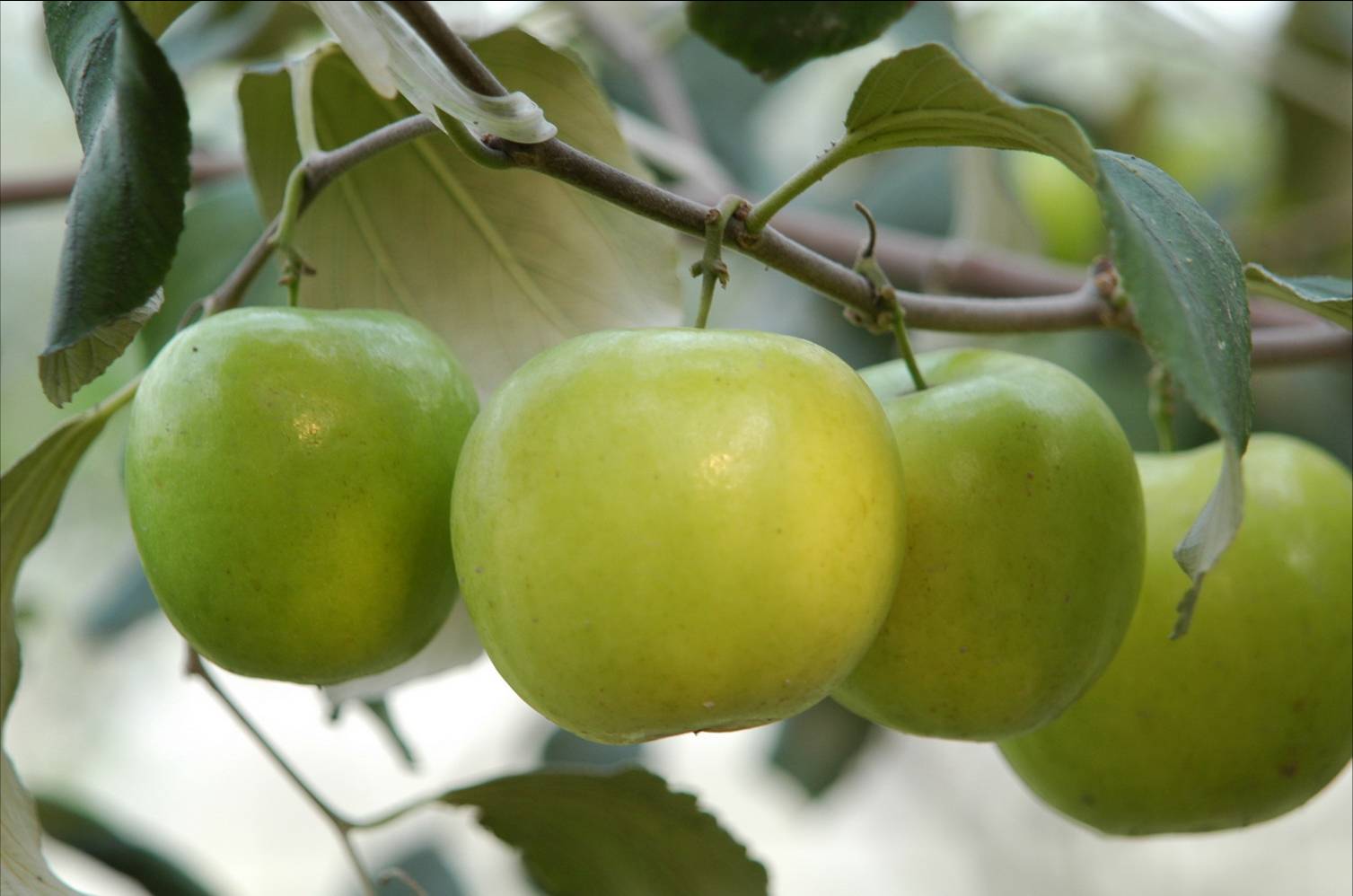
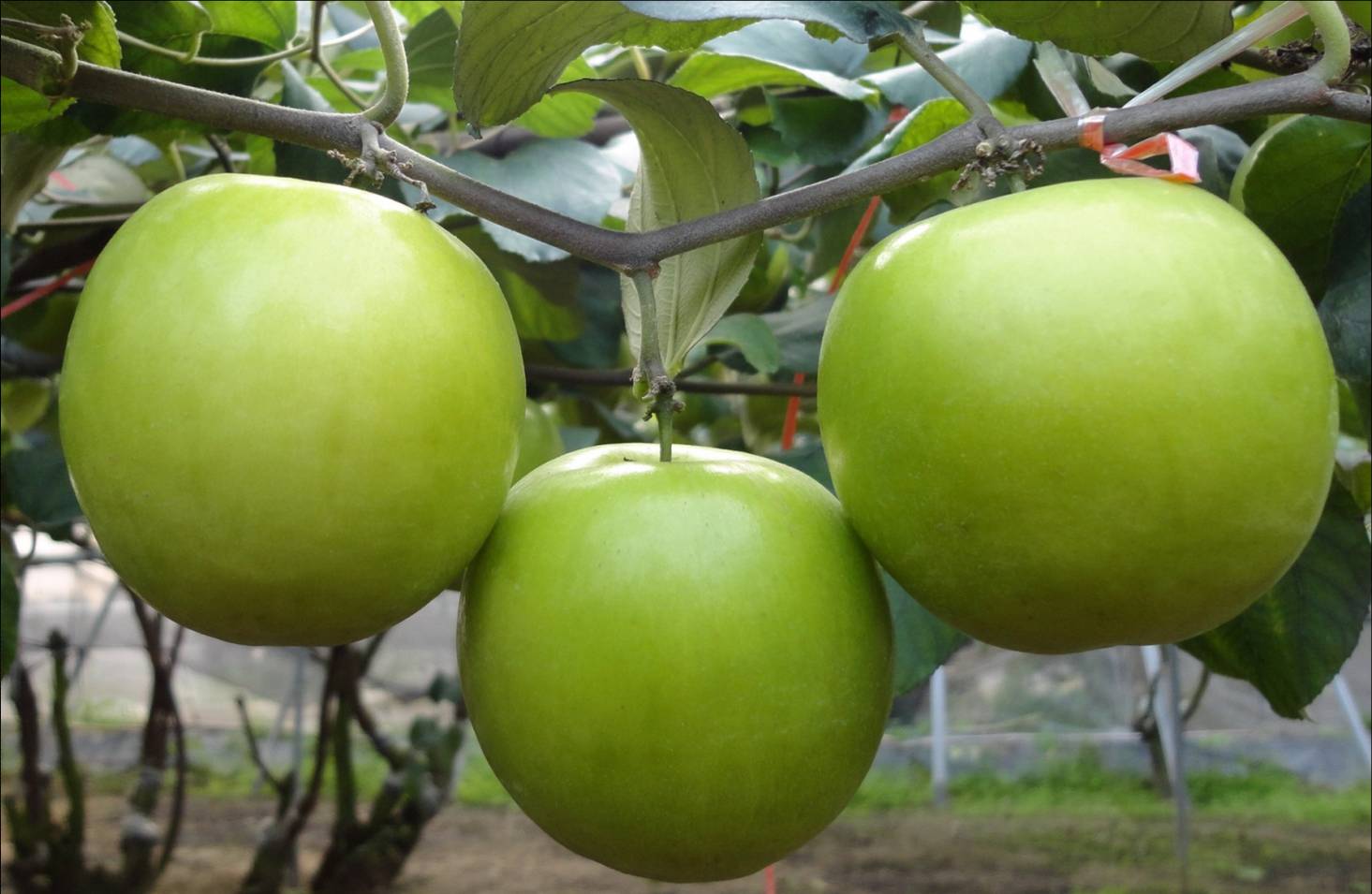
Kaohsiung 7 (Cherry) Kaohsiung 8 (Treasure)
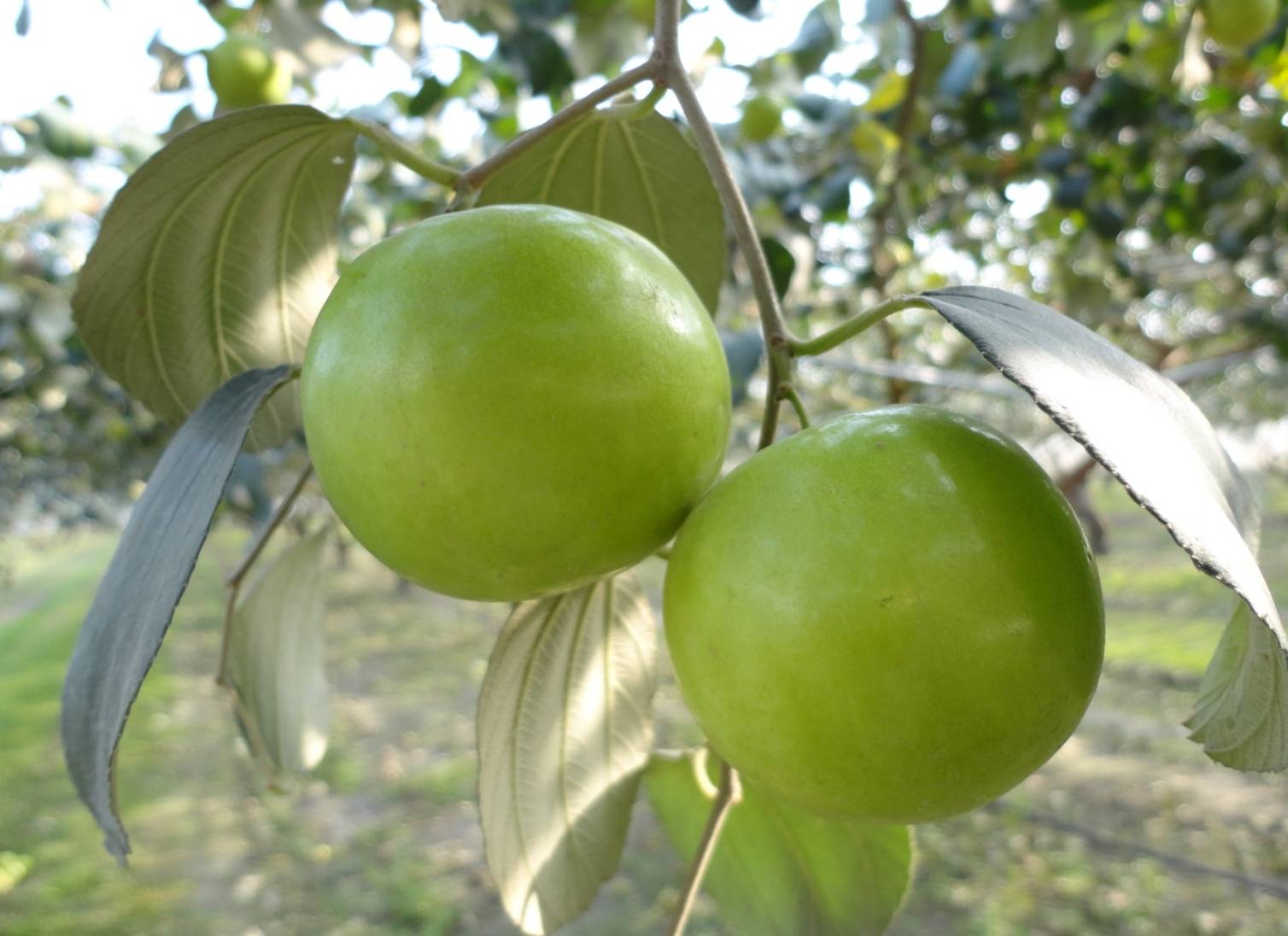
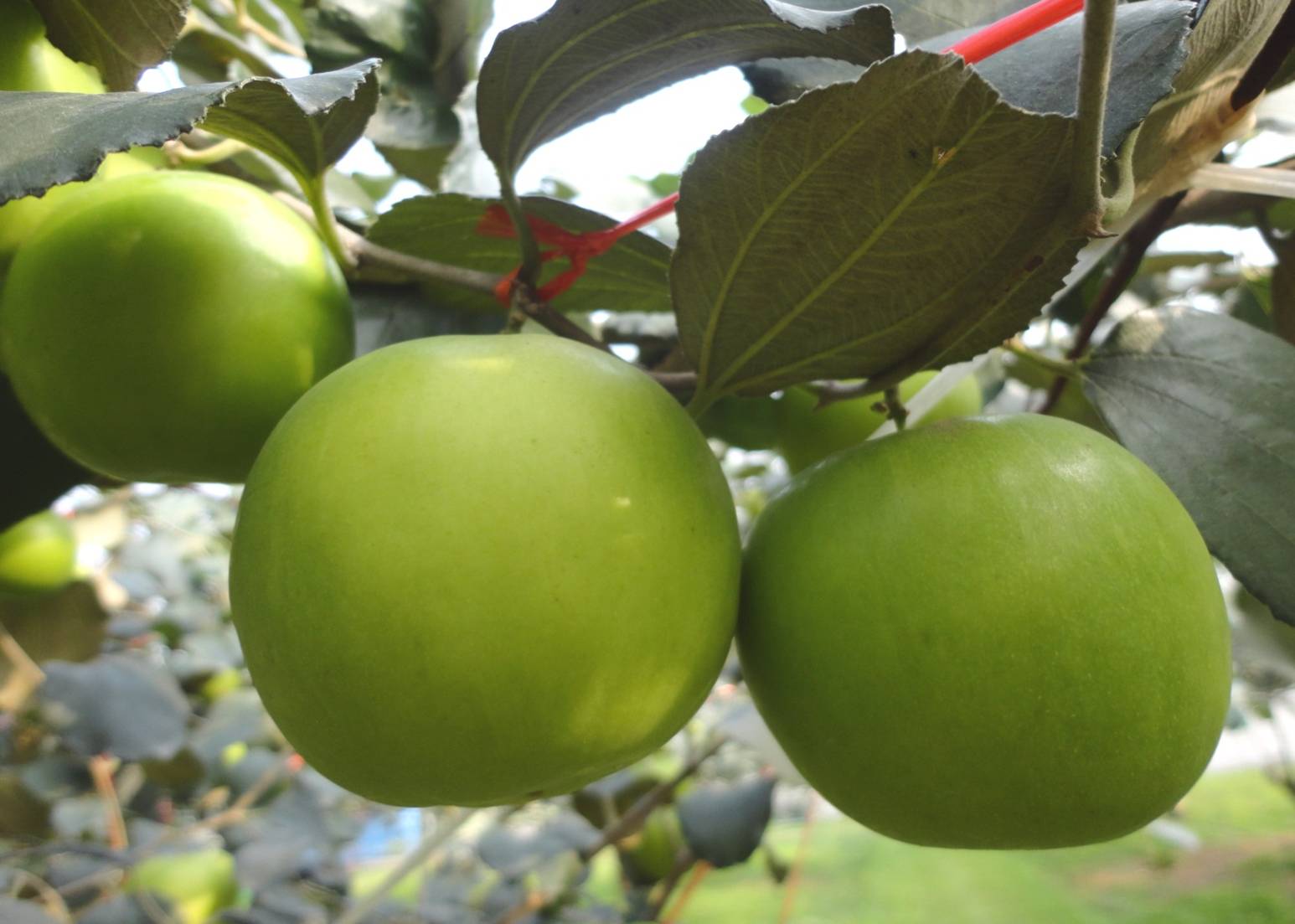
Kaohsiung 10 (Jade) Kaohsiung 11 (Honey)
● Wax Apple
For the breeding of wax apple, ~50 varieties of wax apple from Southeast Asia and local mutants have been collected to establish a germplasm. “Thub Thim Chan” selected from the germplasm is a great summer fruit with bright-colored skin, low fruit cracking, and beautiful appearance. Furthermore, hybrid breeding technology has been developed to improve the existing cultivars for the potential new lines with bright-colored skin, large fruit size, and good flavor.
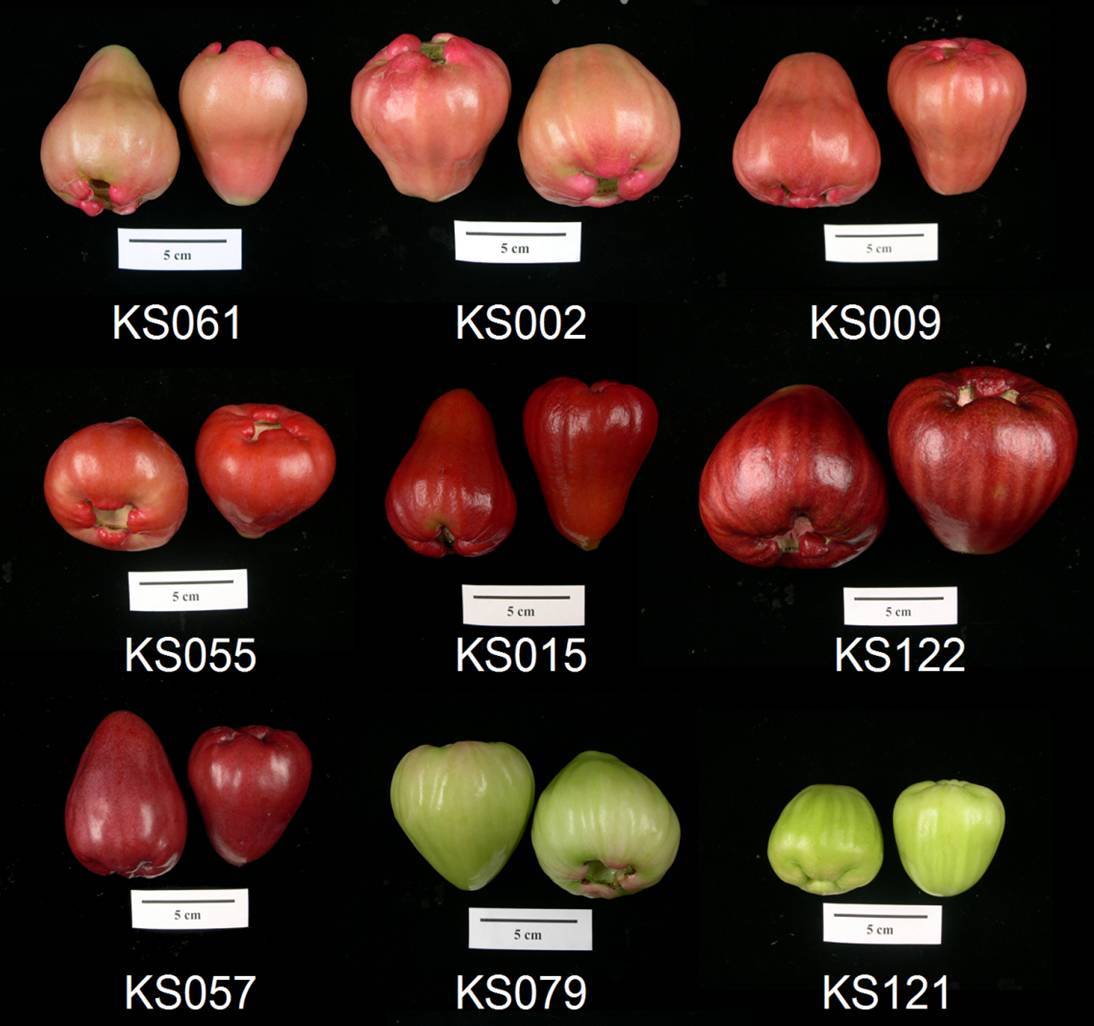
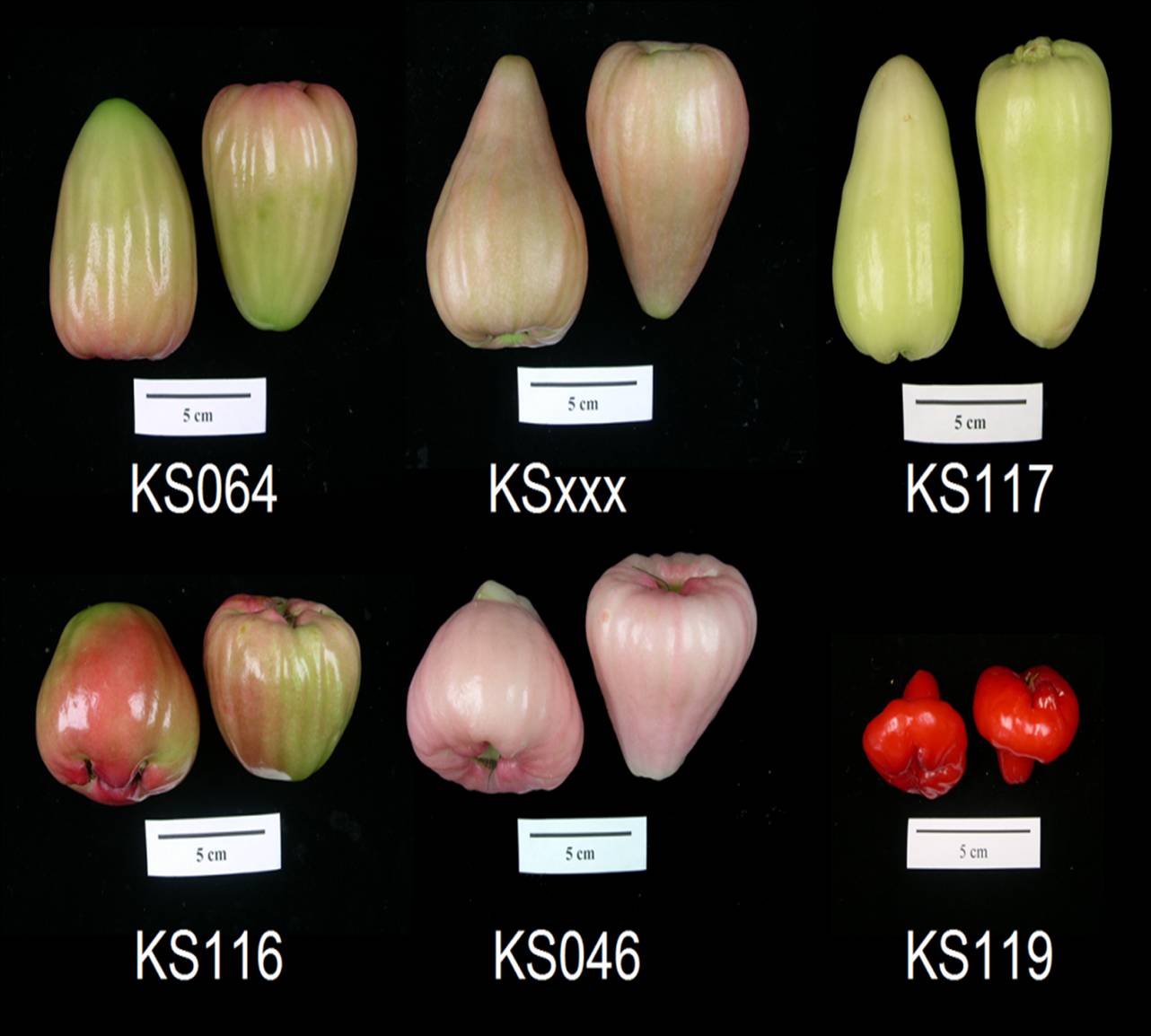
New lines of wax apples with a wide variety of bright colors
Progress has been made on the control of wax apple production. The production season can be adjusted to November-March, with the canopy covered using a black net (for the inhibition of shooting), and followed by the application of floral induction chemicals.
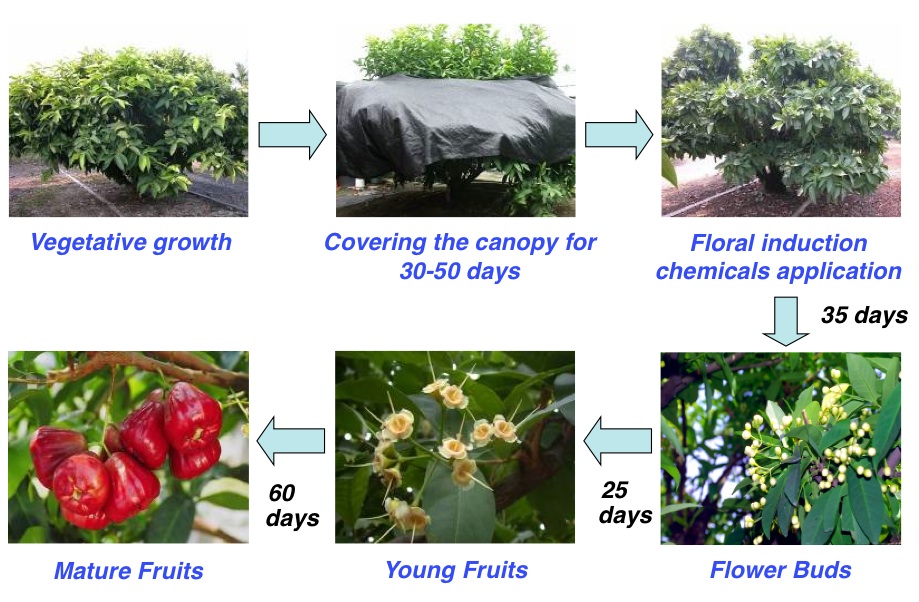
The procedure for off-season induction of wax apple production
● Mango
Mango variety “Kaohsiung 3”, received plant variety rights in August 2008, is characterized by yellow fruit skin, orange flesh, oval fruit shape, soluble solids content of 13-16 oBrix, fruit weight of 400-600 g, 75-80% of flesh, and flavor of native mango. The other variety “Kaohsiung 4”, received its plant variety rights in 2013, is characterized by ovoid fruit shape, pink skin, fruit weight of 300-450 g, fine pulp with low fiber content, and total soluble solid content of 13-17 °Brix.
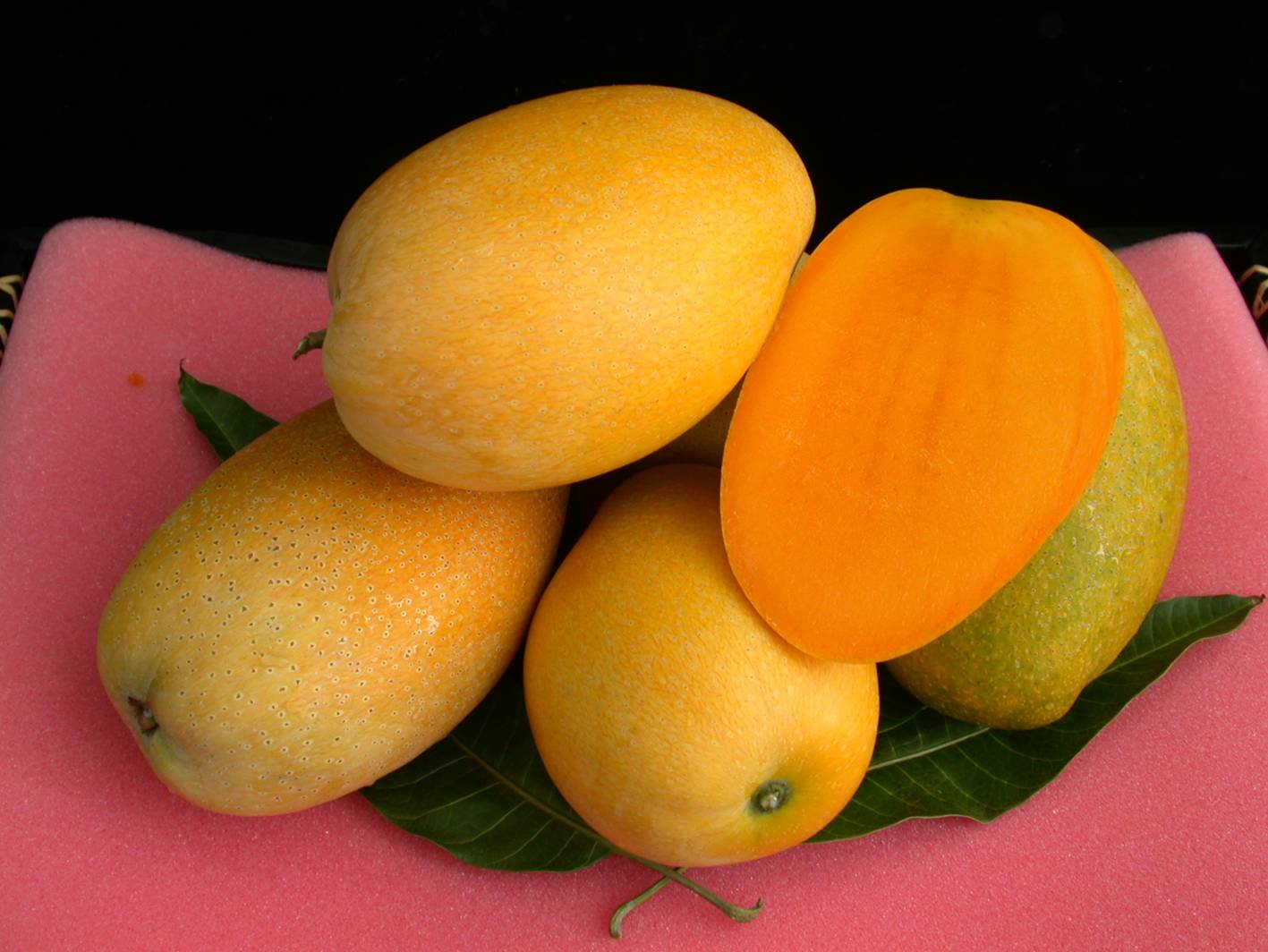

Kaohsiung 3 (Summer Snow) Kaohsiung 4 (Honey Snow)
● Guava
The goals for guava breeding are to develop guava for low-input farming systems as well as good characteristics of medium size, long storage life, stable yield, and high quality. New guava variety “Kaohsiung 2 (Crispy Pearl)”, released in 2013, possesses good characteristics of crispy texture, excellent flavor, and high quality all year round. It is a round-shaped fruit with a rough surface and white flesh with green peel. We investigated the effects of pruning on the fruit development and quality in order to provide farmers with the necessary information to produce off-season guava.
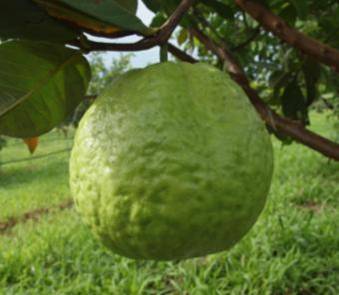
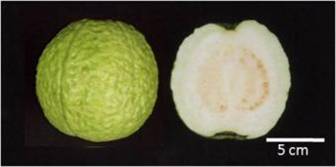
Kaohsiung 2 (Crispy Pearl)
● Papaya
The purpose of papaya breeding focuses on improving fruit characteristics required for domestic and foreign markets. New papaya F 1 hybrid: Kaohsiung No. 9 (Sunlight), released in 2012, is a productive and semi-dwarf variety with hermaphrodite papaya fruits of elongated shape. The fruit weight and total soluble content are 600-700 g and 12-13 °Brix, respectively. The fully ripe papaya fruits have deep yellow-orange skin with deep orange-red flesh. The skin freckles in winter for this variety are much lighter. To reduce the incidences of anthracnose during rainy season and skin freckles during cold season, a “whole-cluster bagging” technique was developed. Use of the new technique has proven to be effective in upgrading the quality o f papaya.
● Litchi
The challenges for stable production of litchi “Yu-Her-Pao” come from the low flowering rate and high fruit dropping rate. Our results showed that trunk girdling accompanied with shoot removal (by hand or by the spray of Ethrel) during October to December increased the flowering rate; pruning of panicles during the flower initiation stage, on the other hand, improved the fruit setting.
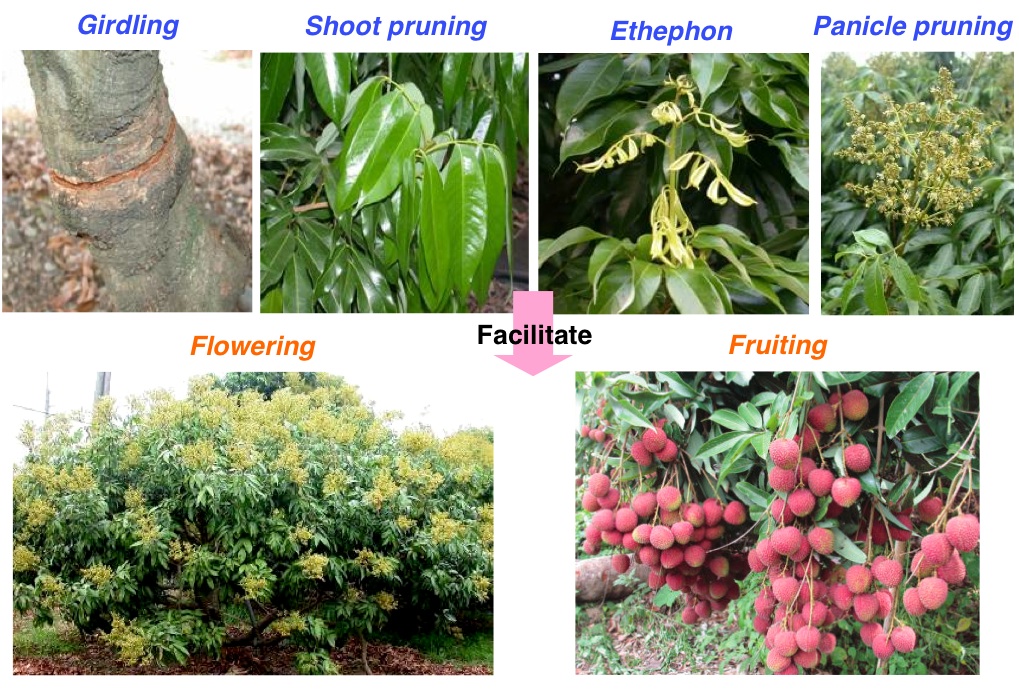
Steady Production for Litchi “Yu-Her-Pao”
● Lemon
Lemon and calamondin are two major beverage crops in Kao-Ping Area. The production of these two fruits peaks during June–October. While their productivity is relatively low from November to May next year, the market demand during the same time is high. A technique combining chemical application, pruning, and fruit thinning in the fall-winter season has been found to be effective for increasing the yield in spring.

